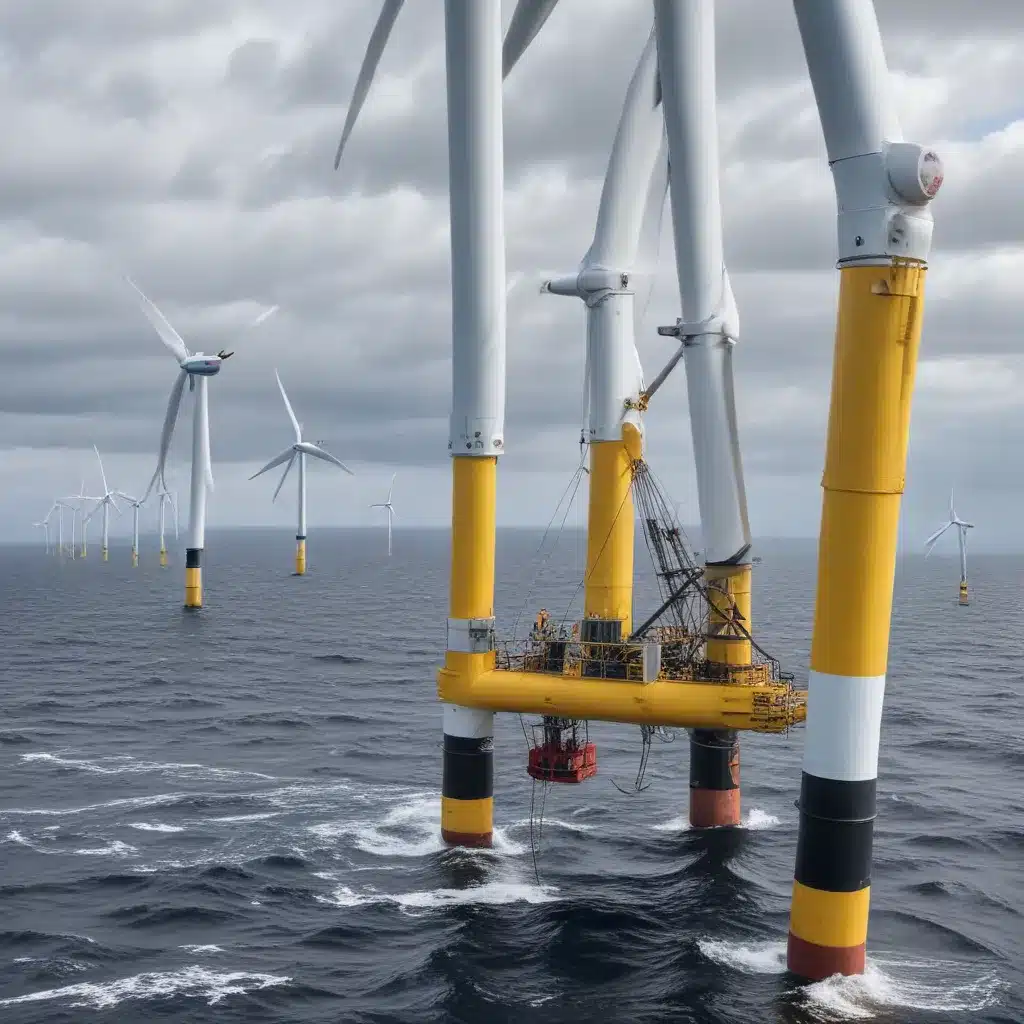
In Europe’s race to a clean energy future, the rapid expansion of offshore wind capacity has emerged as a critical component. With an abundance of high-velocity winds and vast expanses of shallow waters along its coastlines, Europe is poised to harness this abundant renewable resource to power its cities and industries. However, the deployment of offshore wind farms is not without its challenges, and navigating the path to large-scale, sustainable offshore wind development requires a multifaceted approach.
Deployment Strategies
Regulatory Frameworks
Across Europe, governments have implemented a range of policy mechanisms to facilitate the growth of the offshore wind industry. These include feed-in tariffs, renewable energy auctions, and Power Purchase Agreements (PPAs) that provide long-term revenue certainty for project developers. Additionally, streamlined permitting processes and clear regulatory guidelines have been crucial in accelerating project approvals and mitigating delays.
Site Selection
The selection of optimal offshore wind farm locations is a complex task, balancing factors such as wind resource potential, water depth, seabed conditions, and proximity to grid infrastructure. Rigorous site assessments, including detailed bathymetric surveys and metocean data collection, have become essential for identifying the most suitable areas for development. Collaboration between industry, academia, and policymakers has been instrumental in developing comprehensive geographic information system (GIS) databases to support evidence-based decision-making.
Grid Integration
As offshore wind capacity expands, the integration of these projects into the existing electricity grid poses significant challenges. Upgrades to onshore and offshore transmission networks, as well as the development of flexible grid balancing mechanisms, are necessary to ensure the reliable and efficient integration of offshore wind into the broader energy system. Initiatives such as the North Sea Wind Power Hub, a multinational offshore grid project, have emerged to address these grid integration challenges.
Technological Challenges
Turbine Design
The continued advancement of offshore wind turbine technology has been a key driver in improving the cost-competitiveness of this renewable energy source. Innovations in blade design, generator technologies, and foundation systems have led to larger, more efficient turbines capable of withstanding the harsh marine environment. Research and development into floating offshore wind platforms have also expanded the potential for exploiting deep-water wind resources.
Installation Methods
The deployment of offshore wind farms requires specialized vessels, installation techniques, and logistical planning. Innovations in jack-up platforms, dynamic positioning ships, and heavy-lift crane vessels have streamlined the construction process, reducing both cost and installation time. Collaboration between the offshore wind industry and the maritime sector has been crucial in advancing these installation methodologies.
Operation and Maintenance
Ensuring the long-term reliability and performance of offshore wind farms is essential for maximizing their energy output and economic viability. Advancements in condition monitoring systems, predictive maintenance strategies, and robotic inspection technologies have improved the efficiency and cost-effectiveness of operation and maintenance (O&M) activities. Developing a skilled offshore workforce and optimizing supply chain logistics are also key priorities for the industry.
Economic Considerations
Cost Optimization
The levelized cost of energy (LCOE) for offshore wind has decreased significantly in recent years, driven by technological advancements, economies of scale, and improvements in the supply chain. Strategies such as serial production of turbine components, standardization of design and installation processes, and the adoption of digital twins and other Industry 4.0 technologies have been critical in driving down costs.
Financing Models
Financing the construction and operation of offshore wind farms remains a significant challenge, particularly for smaller-scale projects. Innovative financing models, such as green bonds, project finance structures, and public-private partnerships, have emerged to attract investment and mitigate risks. The role of multilateral development banks, national investment agencies, and the growing green finance sector has been instrumental in supporting the scale-up of offshore wind deployment.
Supply Chain Development
Ensuring a robust and localized supply chain is essential for the long-term sustainability of the offshore wind industry in Europe. Investments in domestic manufacturing facilities, port infrastructure, and training programs have been crucial in developing a skilled workforce and reducing reliance on global supply chains. Collaborations between government, industry, and educational institutions have been instrumental in cultivating a thriving offshore wind ecosystem.
Environmental Impacts
Habitat Protection
The deployment of offshore wind farms can have significant impacts on marine ecosystems, including seabed disturbance, noise pollution, and potential disruptions to migratory bird and marine mammal populations. Comprehensive environmental impact assessments, the adoption of nature-based solutions, and ongoing monitoring and mitigation efforts are necessary to ensure the sustainable coexistence of offshore wind and the natural environment.
Stakeholder Engagement
Effective stakeholder engagement, including close collaboration with local communities, environmental organizations, and other marine users, is crucial for addressing concerns and building public acceptance of offshore wind projects. Community benefit schemes, transparent communication, and the incorporation of local knowledge into project planning and design have been instrumental in fostering a more inclusive and sustainable offshore wind industry.
As the European Union continues to push towards its ambitious climate goals, the deployment of offshore wind energy will be pivotal in decarbonizing the power sector and driving the continent’s transition to a sustainable energy future. By addressing the strategic, technological, economic, and environmental challenges, the offshore wind industry can unlock the vast potential of this renewable resource and deliver tangible benefits to communities and ecosystems across Europe. Through continued collaboration, innovation, and a steadfast commitment to sustainability, the offshore wind sector is poised to become a cornerstone of Europe’s clean energy revolution.







